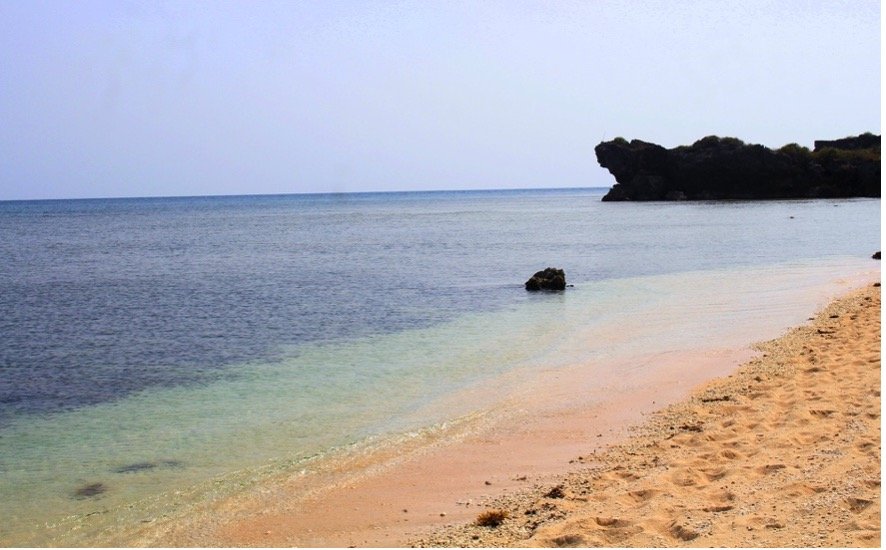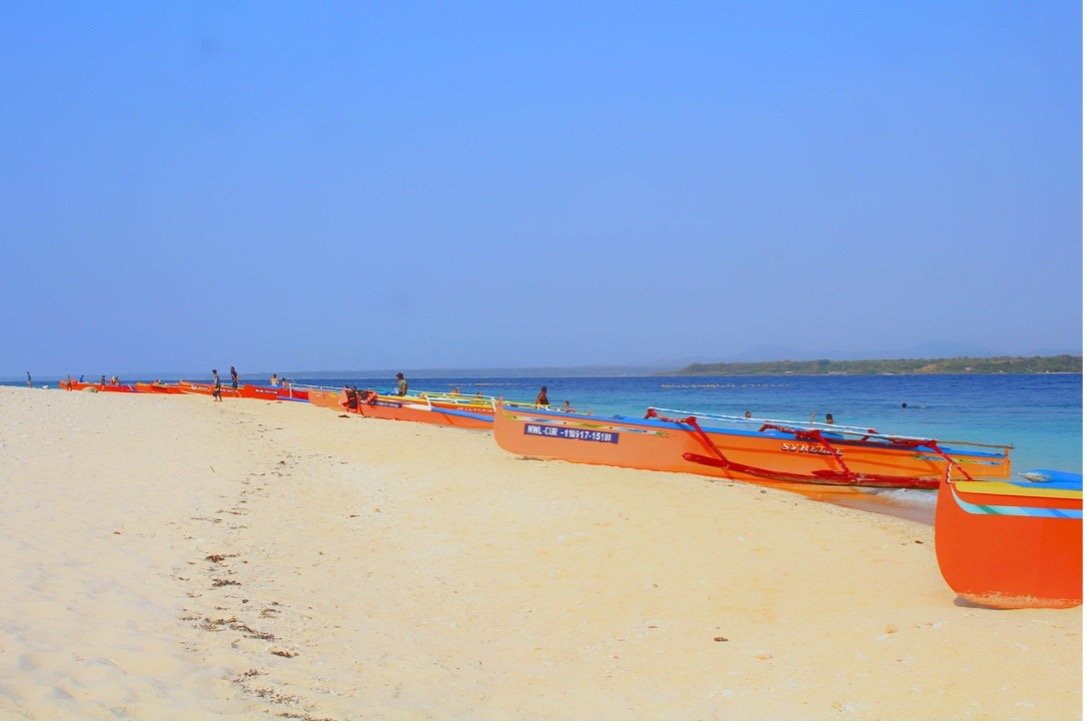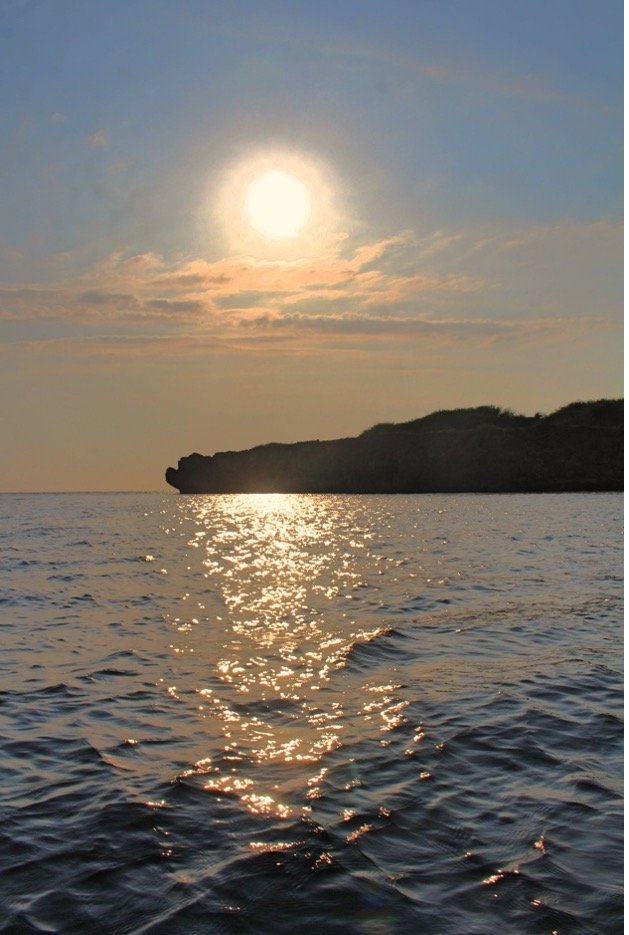Badoc Island: Ilocos Norte’s Little Secret
/Badoc Island is Ilocos Norte’s hidden gem (photo courtesy of Ian Layugan).
When one thinks of a pleasant summer retreat in Ilocos Norte, the usual options that come to mind are Saud Beach, Pagudpud (also known as Blue Lagoon), and the Kapurpurawan Rock Formation. However, it is not widely known that Ilocos Norte is home to a hidden gem of great beauty: Badoc Island.
Badoc Island is a destination that may not be widely known, save by a select group of travel bloggers and photo enthusiasts who have developed a fondness for the place. In contrast to the more popular Pagudpud, Badoc is a small and secluded island that boasts pristine waters, fine sand, and significant historical landmarks.
It is worth noting that Badoc is the birthplace of Juan Luna, a renowned political activist whose art has gained worldwide recognition, especially with his widely known work, Spoliarium. The town derives its name from the abundance of “badok-badok” or timothy, a kind of grass abundant in the area, which is characterized by its long, cylindrical flower heads.
(photo courtesy of Ian Layugan)
Badoc Basics
When commuting to Badoc Island from Manila, board a bus bound for Laoag and request to be dropped off at either Badoc Detachment or Badoc New Market. From there, you may take a tricycle to Barangay Pagsanahan, the jump-off point, where boats are docked and ready to transport you to the island. Tricycle fares typically range from P100-200. Be sure to clarify this with the driver before riding.
The boat has a maximum capacity of six passengers, including the boatman, and the rental fee is Php 1,000 per boat which can be divided among the passengers. Upon arrival, a representative from the municipality will greet you and request that you sign a waiver. Additionally, they will provide you with a safety orientation and life vests.
The bangka ride to the island is a delightful experience that takes no more than 30 minutes. The water is crystalline, and the wind and view are breathtaking. The guides are amiable, too, and would give information about the islands. A guide has shared that the island has been up for sale for years, with an asking price of 160 million pesos.
Exercise caution as the bangkas are relatively small and the seawater can easily seep inside the boat. Small plastic bags are provided at the jump-off point and you must seal your gadgets inside these. It is advisable to bring a waterproof bag to your Badoc trip to ensure the safety of your gadgets and other valuables.
The bangka ride to Badoc Island is a delightful experience (photo courtesy of Ian Layugan).
Crystal clear water will greet you as you disembark, revealing sea stones and shells beneath. From the shore, one can observe the vast expanse of the beach, gradually transitioning into lighter shades of blue. The island offers a limited number of sheds for rent for 300 pesos, inclusive of a 50-peso environmental fee.
Alternatively, visitors may choose to camp on any part of the beach and pay only the environmental fee. For those seeking relaxation or a chance to catch up on reading, the weather and wind are usually agreeable, but it is recommended to bring a mat and tent or umbrella. A small comfort room is available, but it is advisable to relieve yourself before going to the island.
It is a wise idea to bring snacks, food, and refreshments before embarking on the island. There are no eateries, but there is a small store that sells chips and soda. On the way to Badoc, there are a handful of karenderia, a convenience store, and some take-out establishments in Pagsanahan and the other nearby areas where you can order grilled seafood and buy hot rice.
Scene of a short hike in Badoc Island (photo courtesy of Ian Layugan)
There is also a hill in the middle of the island that one can climb for roughly an hour to the summit. It is important to ask local guides first before embarking on a hike, as some snakes thrive on the hill, especially in the summer.
Instagram-able
In a world where travel is measured by its Instagram-able quality, Badoc Island is a joy to shoot. Some couples have traveled to Badoc for prenuptial shoots and save-the-date films. The island is idyllic and relaxing. It can be circled on foot for an hour or two, but be careful of the scorching Ilocos heat during the midday.
Even during peak season, local guides say that Badoc Island does not get a lot of visitors.
This location is an excellent choice for utilizing your GoPro or underwater camera. There are no swimming facilities available on the island, aside from the life vest provided at the jump-off point. To fully appreciate the crystal-clear waters and the thriving sea creatures below it, it is recommended that you bring your own snorkeling equipment.
Beautiful Badoc (photo courtesy of Ian Layugan)
The sunset is beautiful, too, although you need to camp for the night in order to enjoy this. For tourists who avail of the day trip, the bangkero will be back to fetch them at around four in the afternoon. To cap off an amazing trip, you can circumnavigate the island by boat for an additional Php 200 before going back to Pagsanahan. This takes around 30 minutes, but the sunset and breeze are priceless reasons to do it.
Memorable sunsets (photo courtesy of Ian Layugan)
Being situated at the gateway of the province, it is more easily accessible than the other beaches located on the edge of the North. Badoc Island is, without a doubt, one of the many hidden gems in the Philippines that is truly worthy of a visit to make memories.
Ian Layugan hails from Baguio City and is currently based in Gunma Prefecture, Japan where he works with the Kiryu City Board of Education under the Japan Exchange and Teaching Programme. He has written for Rappler and led research projects for Oxfam, Asmae Internationa, and the Asia Research Institute at the National University of Singapore. Follow him on Instagram/Twitter at @ianlayuganx.
More articles from Ian Layugan









